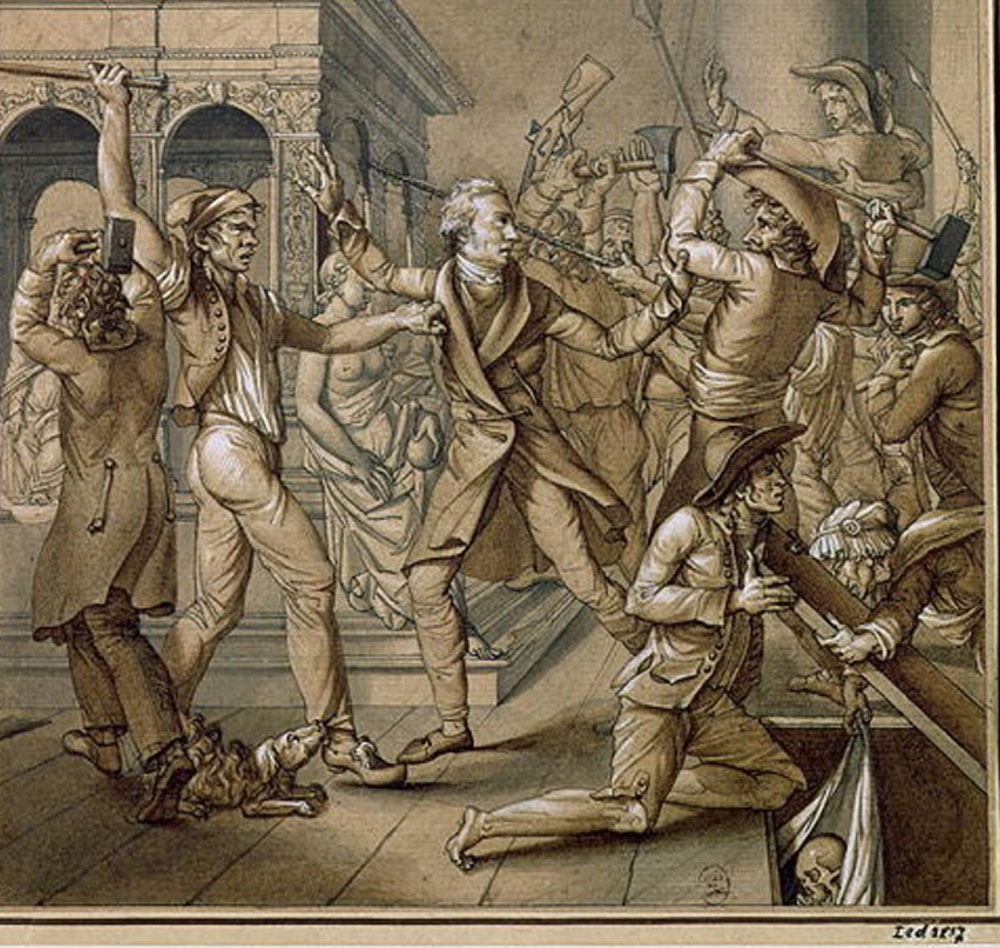
June 24, 2020; New York Times
Yesterday, Robin Pogrebin of the New York Times reported that Keith Christiansen, a top curator at the Metropolitan Museum of Art, let rip a Juneteenth Instagram post that so clearly exhibited his lack of cultural discernment that it could potentially substitute for a resignation letter.
Christiansen, who has been at the museum for 43 years, is the museum’s chairman of European paintings, and what he wrote, as reported by Pogrebin, has ignited an internal storm:
Below a pen-and-ink image of the French archaeologist Alexandre Lenoir, who devoted himself to saving France’s historic monuments from the ravages of the French Revolution, Mr. Christiansen wrote: “Alexandre Lenoir battling the revolutionary zealots bent on destroying the royal tombs in Saint Denis. How many great works of art have been lost to the desire to rid ourselves of a past of which we don’t approve.
“And how grateful we are to people like Lenoir,” Mr. Christiansen continued, “who realized that their value—both artistic and historical—extended beyond a defining moment of social and political upheaval and change.” While Mr. Christiansen appeared to be arguing for the preservation of monuments, he also struck some as insensitive and tone deaf.
This, of course, makes Christiansen appear to have been living in a cloistered bubble as controversy rages all around the country about the oppressiveness of daily living with the glorified and unapologetic artifacts of slavery.
Sign up for our free newsletters
Subscribe to NPQ's newsletters to have our top stories delivered directly to your inbox.
By signing up, you agree to our privacy policy and terms of use, and to receive messages from NPQ and our partners.
On Tuesday, Christiansen emailed the entire staff.
“I will make no excuses except to say that I had in mind one thing and lacked the awareness to self-reflect on how my post could go in a very different direction, on a very important day…and would cause further hurt to those experiencing so much pain right now,” he wrote. “I want to be clear on my view that monuments of those who promoted racist ideologies and systems should never be glorified or in a location where they can cause further harm.”
“This instance has further taught me that we, as members of this institution, are in the position of power to help correct a problematic history, and we must be self-aware and allies at every moment in this fight.”
Christiansen has deleted both the post and his Instagram account, but Max Hollein, the Met’s CEO, says the museum has to own its deep roles in cultural oppression.
“There is no doubt that the Met and its development is also connected with a logic of what is defined as white supremacy. Our ongoing efforts to not only diversify our collection but also our programs, narratives, contexts and staff will be further accelerated and will benefit in urgency and impact from this time.”
Daniel H. Weiss, the museum’s president and chief executive, concedes that “we have moved too slowly in building an institution that more honestly reflects the communities we serve or that honors our aspirations.”—Ruth McCambridge













